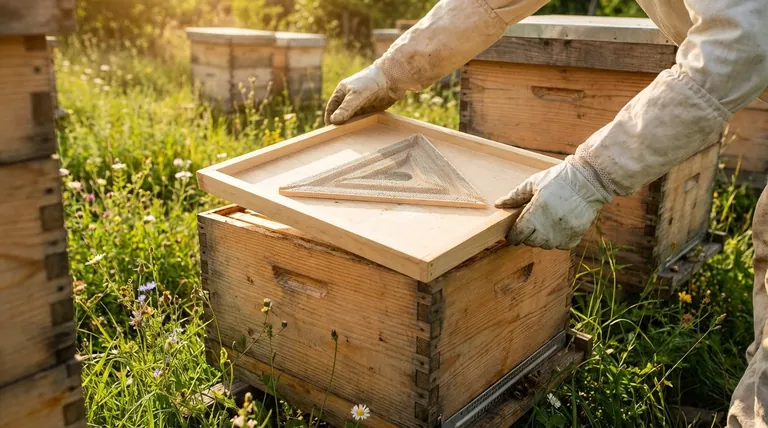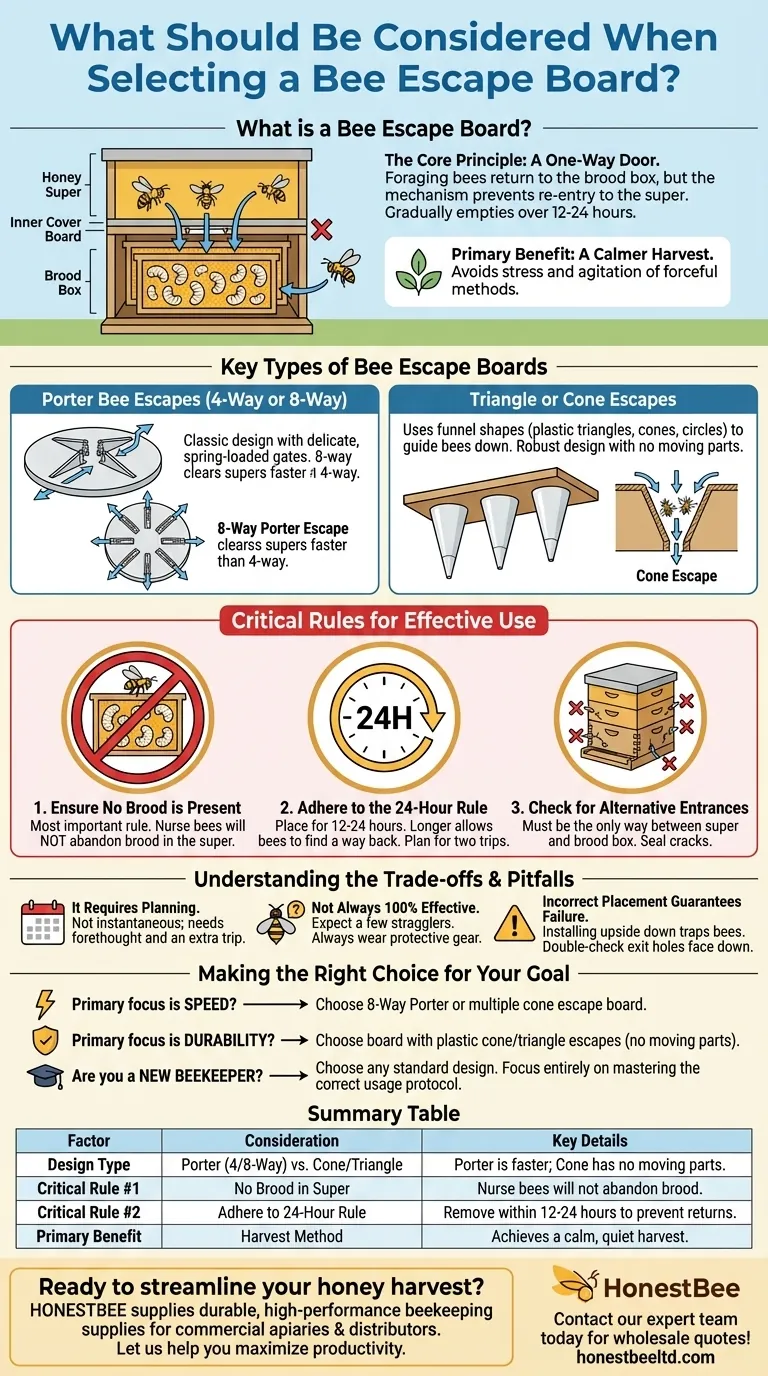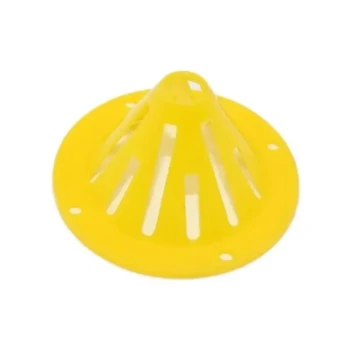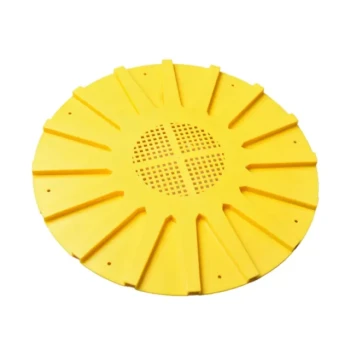When selecting a bee escape board, the most important factors are understanding the different one-way exit designs available and knowing the critical rules for using the board correctly, as improper use is the most common reason for failure. The specific design, such as a 4-way or 8-way Porter escape, primarily affects the speed at which bees leave the super.
The success of a bee escape board has less to do with the specific model you choose and more to do with your application. The tool will only work if there is no brood in the honey super and you remove the board within 24 hours.

What is a Bee Escape Board?
The Core Principle: A One-Way Door
A bee escape board is a simple inner cover fitted with a one-way gate. It is placed between the honey supers you intend to harvest and the brood box below.
Foraging bees return to the brood box through the escape, but the one-way mechanism prevents them from re-entering the honey super. Over 12 to 24 hours, the super gradually empties of bees.
The Primary Benefit: A Calmer Harvest
The main advantage of using a bee escape board is that it allows for a calm, quiet honey harvest. It avoids the stress and agitation caused by more forceful methods like using a fume board or brushing bees off each frame individually.
Key Types of Bee Escape Boards
Porter Bee Escapes (4-Way or 8-Way)
The classic design is the Porter bee escape, which uses a set of delicate, spring-loaded gates that bees can easily push through on their way down but cannot open from the other side.
These are often sold as inserts for a standard board. An 8-way escape simply has more exits than a 4-way, allowing the super to be cleared of bees more quickly.
Triangle or Cone Escapes
Another common design uses plastic triangles, cones, or circles that funnel bees down through a hole in the board. The shape makes it very difficult for them to find the small entrance hole to travel back up into the super. These designs are often considered more robust as they have no moving parts.
Critical Rules for Effective Use
Ensure No Brood is Present
This is the single most important rule. If there are eggs, larvae, or pupae in the honey super, the nurse bees will not abandon them. An escape board will be completely ineffective if brood is present.
Adhere to the 24-Hour Rule
The board should be placed on the hive for 12 to 24 hours. Any longer, and the bees will eventually find a way back into the super, defeating the purpose. This means you must plan for two trips to the apiary: one to install the board and one to remove the cleared supers the next day.
Check for Alternative Entrances
The escape board must be the only way for bees to travel between the super and the brood box. Before installing it, ensure there are no cracks or holes in your equipment that could serve as an alternative entrance for the bees.
Understanding the Trade-offs and Pitfalls
It Requires Planning
Unlike brushing bees off frames, using an escape board is not an instantaneous process. It requires forethought and an extra trip to your bee yard, which must be factored into your schedule.
It Is Not Always 100% Effective
You should not expect a completely empty super. A few straggler bees often remain. Always wear your protective gear when removing the supers, as some bees may still be present.
Incorrect Placement Guarantees Failure
If the board is installed upside down, it will trap bees in the super instead of letting them out. Always double-check that the exit holes are facing down, towards the brood chamber.
Making the Right Choice for Your Goal
- If your primary focus is speed: An 8-way Porter escape or a board with multiple cone escapes will clear the supers faster than simpler designs.
- If your primary focus is durability: A board with plastic cone or triangle escapes has no moving parts that can get gummed up with propolis.
- If you are a new beekeeper: Choose any standard design, but focus entirely on mastering the correct usage protocol, as this is far more important than the specific model.
Ultimately, any well-made bee escape board will do the job effectively when used correctly.
Summary Table:
| Factor | Consideration | Key Details |
|---|---|---|
| Design Type | Porter (4/8-Way) vs. Cone/Triangle | Porter is faster; Cone has no moving parts. |
| Critical Rule #1 | No Brood in Super | Nurse bees will not abandon brood. |
| Critical Rule #2 | Adhere to 24-Hour Rule | Remove board within 12-24 hours to prevent bees from returning. |
| Primary Benefit | Harvest Method | Achieves a calm, quiet harvest vs. forceful methods. |
Ready to streamline your honey harvest? For commercial apiaries and distributors, choosing the right equipment is crucial for efficiency. HONESTBEE supplies durable, high-performance beekeeping supplies and equipment through wholesale-focused operations. Let us help you select the perfect bee escape boards and other essentials to maximize your productivity. Contact our expert team today to discuss your needs and request a wholesale quote!
Visual Guide

Related Products
- HONESTBEE Wooden Bee Escape Board with Triangle Mesh Design for Beekeeping
- Slatted Porter Style Bee Escape for Rapid Hive Clearing
- Heavy Duty Metal Corner Bee Escape for Reliable Hive Clearing
- Circular Labyrinth Bee Escape for Efficient Hive Management
- Professional Durable Two-Piece Plastic Bee Escape
People Also Ask
- What is the recommended time to leave the triangle escape board installed before harvesting honey? A Guide to a Stress-Free Harvest
- What precautions should be taken when using the triangle escape board? Master Gentle Honey Harvesting
- How is the Triangle Bee Escape Board placed when removing a super? Master the Correct Placement for a Stress-Free Harvest
- What are the available frame sizes for Triangular Escape Boards? Find the Perfect Fit for Your Hive
- What is the effectiveness of the Bee Escape Board? Achieve a Calm, 95% Bee-Free Honey Harvest



















